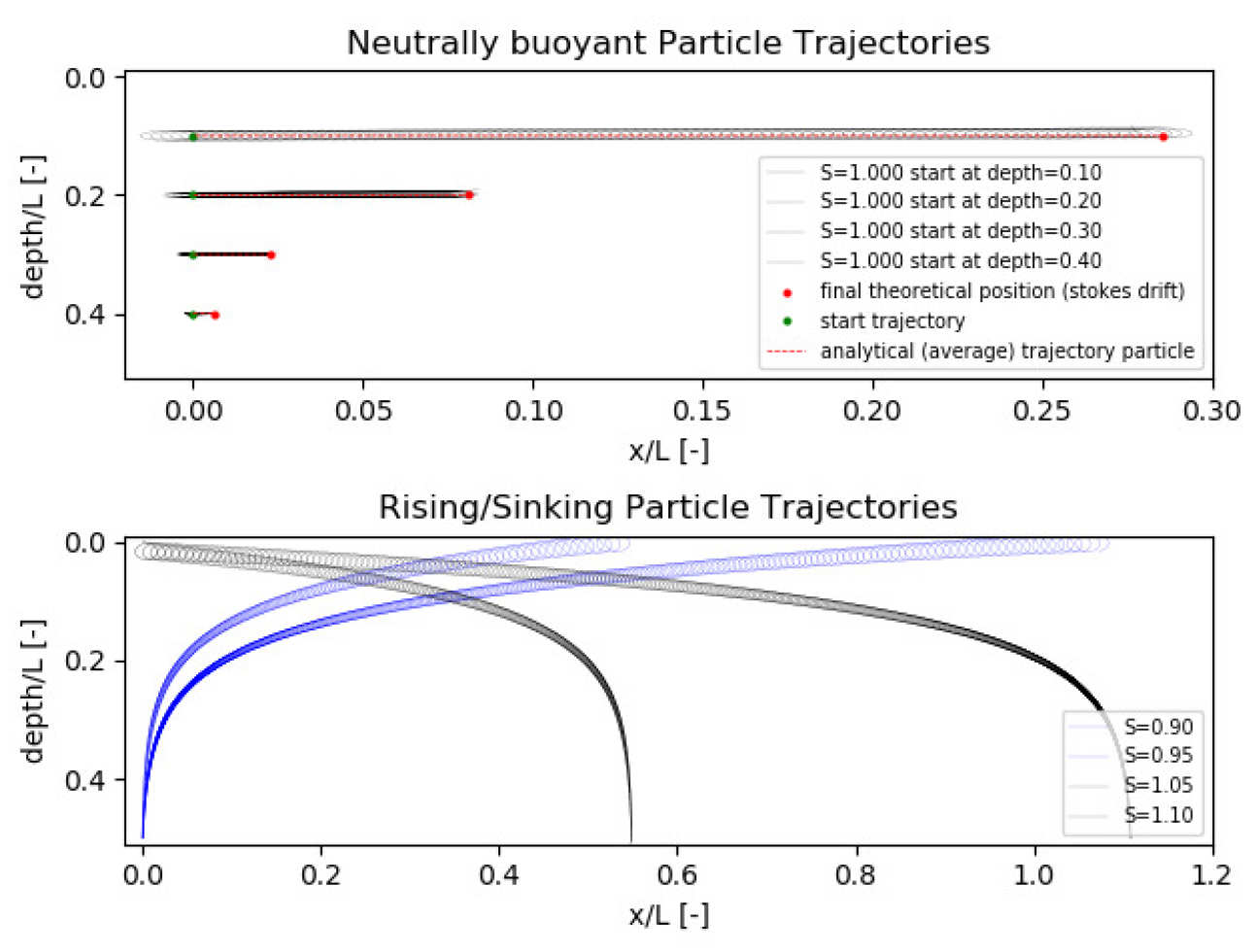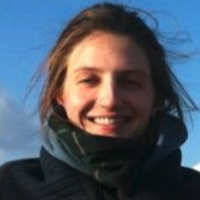Cleo Jongedijk
Lagrangian tracking of plastic particles in coastal areas and evaluation of beaching
Started: December 2017
Supervisor: van Reeuwijk, M., Alsina, J.
Description of Research
The largest concentration of plastic litter in oceans occurs in the nearshore. Coastlines are a major sink of microplastics, yet it is unclear how these small particles are carried by breaking waves across the surfzone. In this PhD project, velocity fields from a shallow water equations model and Lagrangian tracking software PARCELS are used in order to predict the transport magnitude and direction of weakly inertial particles in the nearshore and in particular under the influence of breaking waves. An example of weakly inertial particles is shown in the figure below. This PhD project creates new knowledge of the behaviour of plastic particles in the coastal region, where it directly affects humans, furthermore will it contribute to a better understanding of plastic particle dynamics at the boundary of the ocean which will improve global scale plastic particle transport modeling.

Background
Cleo is a graduate with a BSc in Applied Physics and a MSc in Environmental Fluid Mechanics from Delft University of Technology. In 2016, she carried out a research internship in the National Oceanograpy Center Southampton (NOCS) with prof. Sybren Drijfhout and Dr Florian Sevellec where she used the outcome of several CMIP5 models to define a transfer matrix for ENSO prediction.
Cleo Jongedijk
 Fluid Mechanics Research Student
Fluid Mechanics Research Student
Department of Civil & Environmental Engineering
Imperial College London SW7 2AZ
c.jongedijk17@imperial.ac.uk


